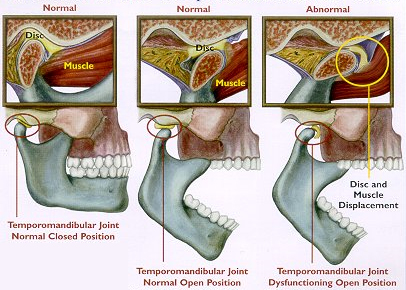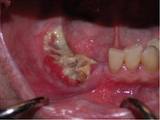Tooth development or odontogenesis is the complex process by which teeth form from embryonic cells, grow, and erupt into the mouth. Although many diverse species have teeth, non-human tooth development is largely the same as in humans. For human teeth to have a healthy oral environment, enamel, dentin, cementum, and the periodontium must all develop during appropriate stages of fetal development. Primary (baby) teeth start to form between the sixth and eighth weeks, and permanent teeth begin to form in the twentieth week. If teeth do not start to develop at or near these times, they will not develop at all. Continue reading
Monthly Archives: May 2012
Surgical exposure of impacted tooth
When a tooth fails to emerge through the gums, it is considered to be an impacted tooth. This commonly occurs in the case of canine teeth.
It is important to treat an impacted tooth in order to prevent the improper eruption of nearby teeth, cyst formation, possible infection or other negative changes in the jaw. Continue reading
Tongue thrusting
Tongue thrust (also called reverse swallow or immature swallow) is the common name of orofacial muscular imbalance, a human behavioral pattern in which the tongue protrudes through the anterior incisors during swallowing, speech, and while the tongue is at rest. Nearly all young children exhibit a swallowing pattern involving tongue protrusion, but by the age of six most have switched to a normal swallowing pattern. People who tongue thrust do it naturally and are usually unaware of the behavior. Continue reading
Oral Pemphigoid
Oral pemphigoid (pemphigoid of the mouth) is an uncommon blistering condition which affects primarily the lining of the mouth and gums. Other moist surfaces of the body (known as mucous membranes) can also be affected, and these include the surface layers of the eyes, inside the nose and the genitalia. The skin is less commonly involved but can be affected by a similar blistering condition, known as bullous pemphigoid. Continue reading
Types of toothbrushing methods
MANIPULATING THE BRUSH
To cleanse the occlusal surfaces of teeth, the tips of the bristles should be worked into the pits and fissures with enough vibration to loosen and dislodge all debris. Continue reading
Painful Trismus Part 2
Why do temporomandibular joints click?
Laxity of the posterior distal ligaments allows the disc to move forward into an abnormal position and it may momentarily obstruct forward condylar translation during jaw movements. The disc may be trapped and stretched forwards but further movement releases it suddenly and it snaps back into its normal position, giving rise to the audible and palpable click that the individual appreciates, this is an opening click. Continue reading
Post operative instructions after placing braces
Eating first days
Although some patients are able to eat or drink almost anything while in braces and have no ill effects, there are certain dietary habits that are known to cause breakage of orthodontic appliances as well as increasing the risk of dental disease. Our aim is to achieve the treatment goals with as few disturbances due to appliance breakage as possible, and minimize the side effects of poor diet choices. Remember, teeth move their best in a healthy environment and in individuals with excellent overall health. Be sure you have a well balanced diet. Continue reading
Painful Trismus Part 1
Suffering from painful and limited opening of the mouth? Having difficulty moving your mouth as you please? You could be experiencing a condition called trismus. Continue reading
Cleft lip repair Part 2
Surgical procedure
Cleft lip repair can be initiated at any age, but optimal results occur when the first operation is performed between two and six months of age. Surgery is usually scheduled during the third month of life.
While the patient is under general anesthesia, the anatomical landmarks and incisions are carefully demarcated with methylene blue ink. An endotracheal tube prevents aspiration of blood. The surgical field is injected with a local anesthestic to provide further numbing and blood vessel constriction (to limit bleeding). Myringotomy (incisions in one or both eardrums) is performed, and myringotomy tubes are inserted to permit fluid drainage. Continue reading
Osteonecrosis of the Jaw Part 2
A brief introduction has been done in “Osteonecrosis of the jaw Part 1“. Here in this article we will be discussing briefly about the prevention and treatment of osteonecrosis of the jaw.
How is osteonecrosis of the jaw treated?
Osteonecrosis can either be treated conservatively, or surgically:
i) Conservative treatment
Conservative treatment basically means that no active treatment is done that is directly addressing the problem. Usually, patients who present with osteonecrosis of the jaw are started on antibacterial rinses (eg: Chlorhexidine gluconate mouthwash), antibiotics and oral analgesics. Continue reading


